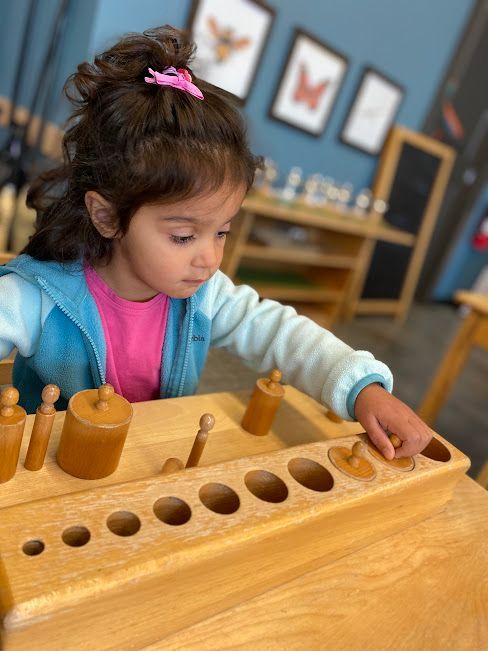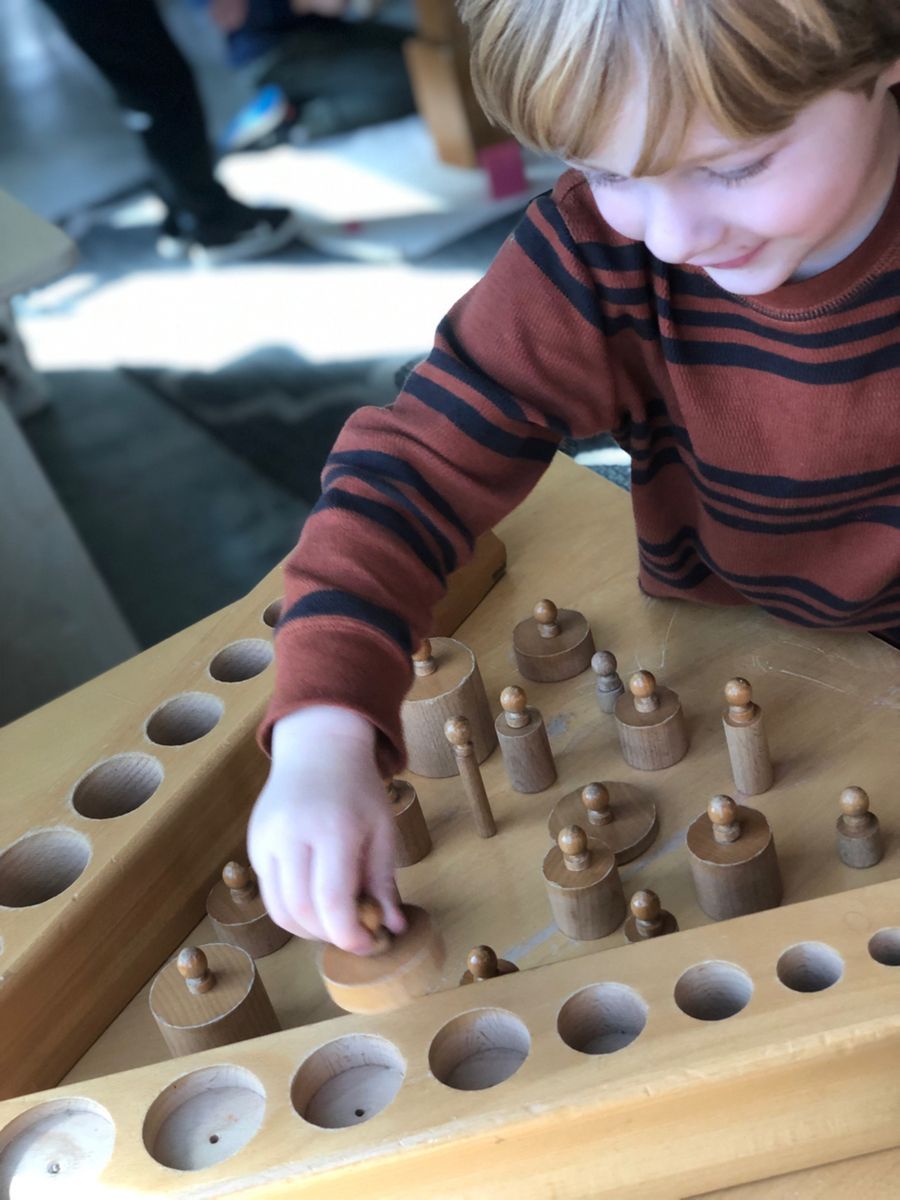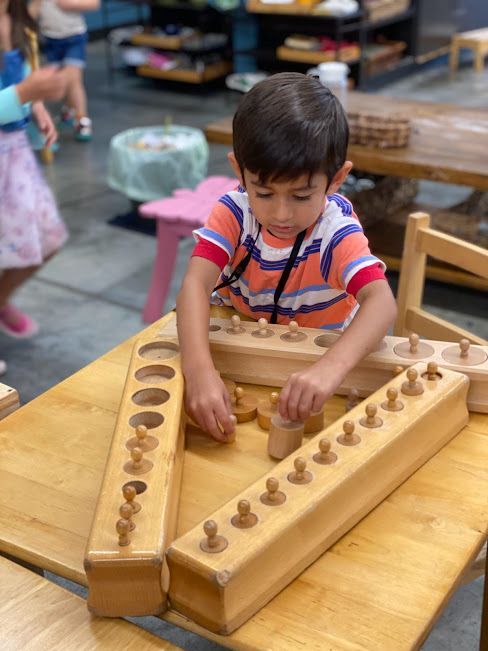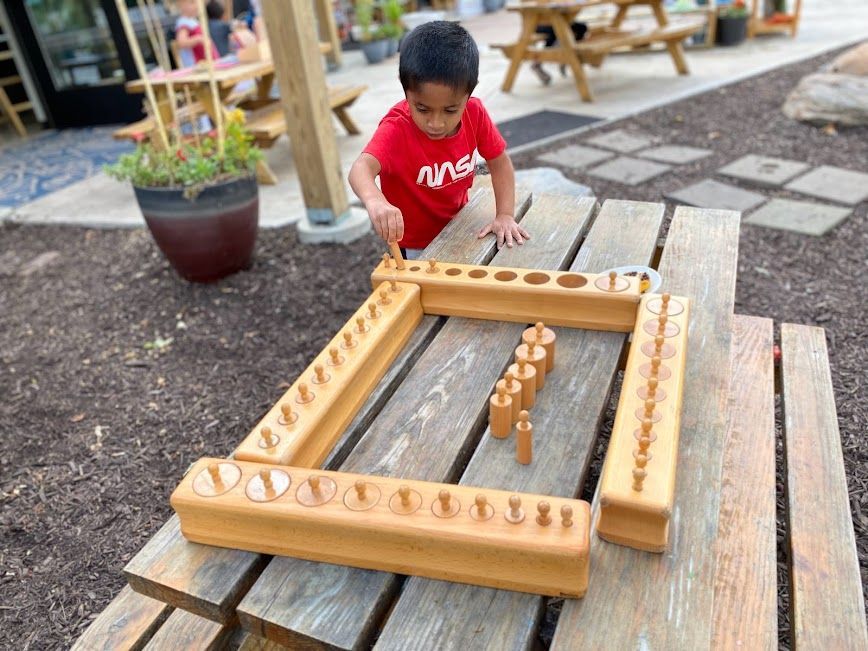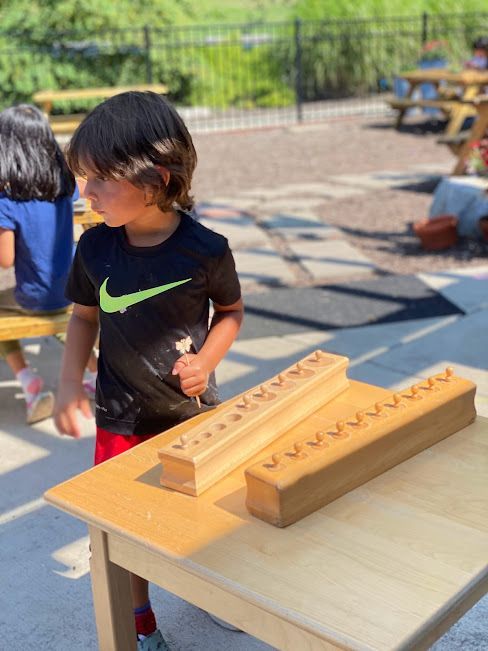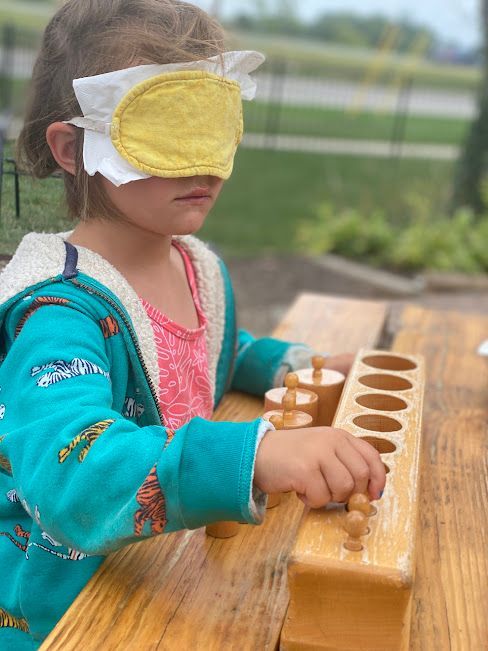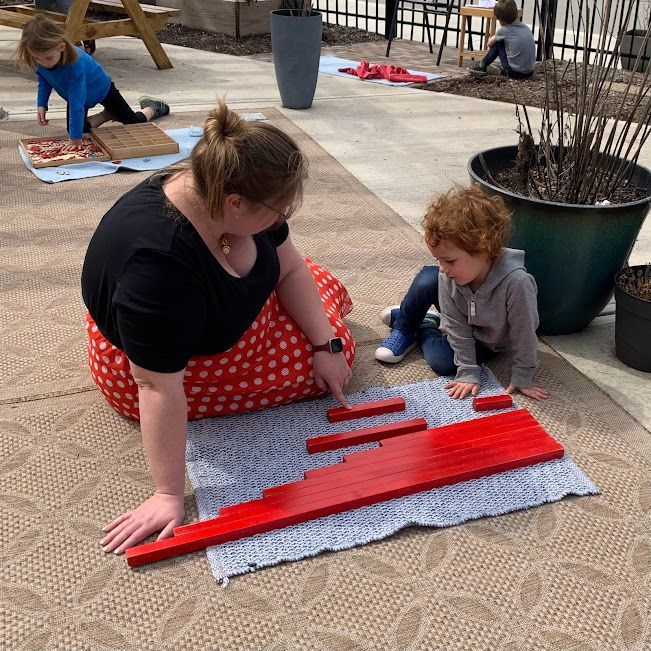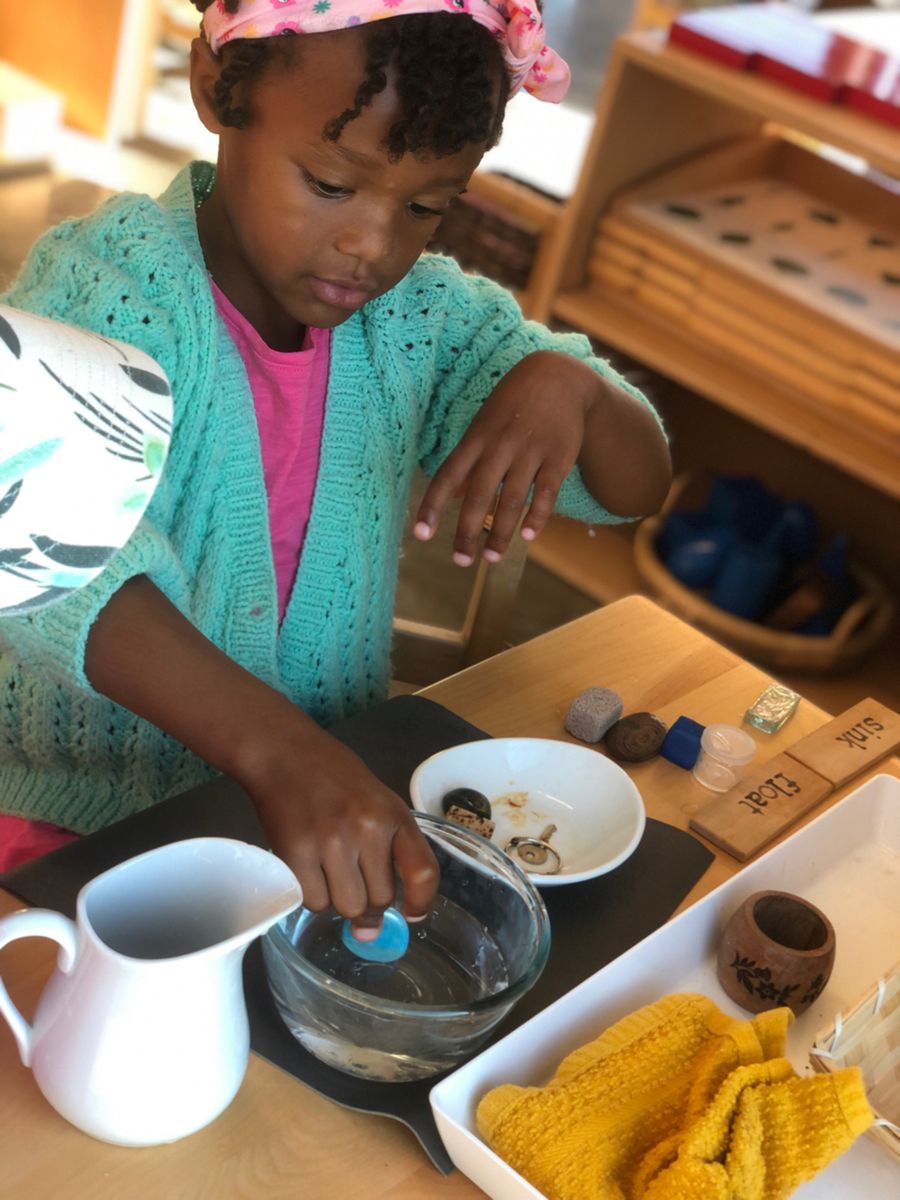"The hands help the development of the intellect. When a child is capable of using his hands, he can have a quantity of experiences in the environment through using them. In order to develop his consciousness, then his intellect, and then his will, he must have exercises and experiences."
DR. MARIA MONTESSORI
Through her many observations, Maria Montessori noted that the child is best able to understand a single concept or idea when the material contained an isolation of quality and then each material presents an isolation of difficulty. Directresses determine the right isolation of difficulty through choosing materials that appropriately meet the child's developmental needs. The material should be challenging but not too difficult nor to easy. The isolation of difficulty is specific to each exercise and increases with each added gradation or new exercise presented with the same material. This makes the work inviting to the child as it allows the child to focus his attention on one problem at a time. The sequence of use and grading in logical progression from easy to more difficult should be set out as far as possible. This lets the child know his limits: he knows what he can do and what lies ahead by what has not been introduced to him, yet. The materials themselves also aid in this in that the area of focus or isolation of quality is already developed in the design of each material. Thanks to Maria herself in designing and creating nearly all materials in the Montessori classroom, the materials already contain an isolation of difficulty.
Each material in the Montessori classroom has one direct aim or purpose within the material. Subsequent exercises with the material lend to further extensions and challenges. For example, with the material of the Cylinder Blocks, there are a set of four cylinder blocks. Within each block there contains 10 cylinders. Block 1: The cylinders vary in two dimensions: width and length (diameter). The diameter increases from 1 cm to 5.5 cm. The height is constant at 5.5 cm. Block 2: The cylinders vary in three dimensions: width, height, and length. The diameter increases from 1 cm to 5.5 cm and the height increases from 1 cm to 5.5 cm. Block 3: The cylinders vary in three dimensions: width, height, and length. The diameter increases from 1 cm to 5.5 cm and the height decreases form 5.5 cm to 1 cm. Block 4: The cylinders vary in one dimension. The diameter remains constant at 2 cm. The height increases from 1 cm to 5.5 cm.
The material is first presented with Cylinder Block 1, taking out the two extremes, first. "Contrasts attract attention. This is why when we present the materials, we start with the extremes. Once the attention is focused and the interest has been aroused by experience, we can help the child through the gradations to arrive at a refinement of observation and intelligence." (Dr. Maria Montessori). The next exercises include: two cylinder blocks at a time, then three and finally all four. When the children have obtained mastery of all four, they can play distance games marking a specific cylinder and retrieving it. This too, can be built in difficulty from one Cylinder Block up to all four. Finally, the child can experience the Cylinder Blocks (again, any number from 1-4), but this time eliminating the sense of sight and competing the work with a blindfold.
The isolation of difficulty in materials and in the directress's observation as to when to present these materials is a common occurrence throughout the Montessori classroom. This concept allows for exponential development with the child.


